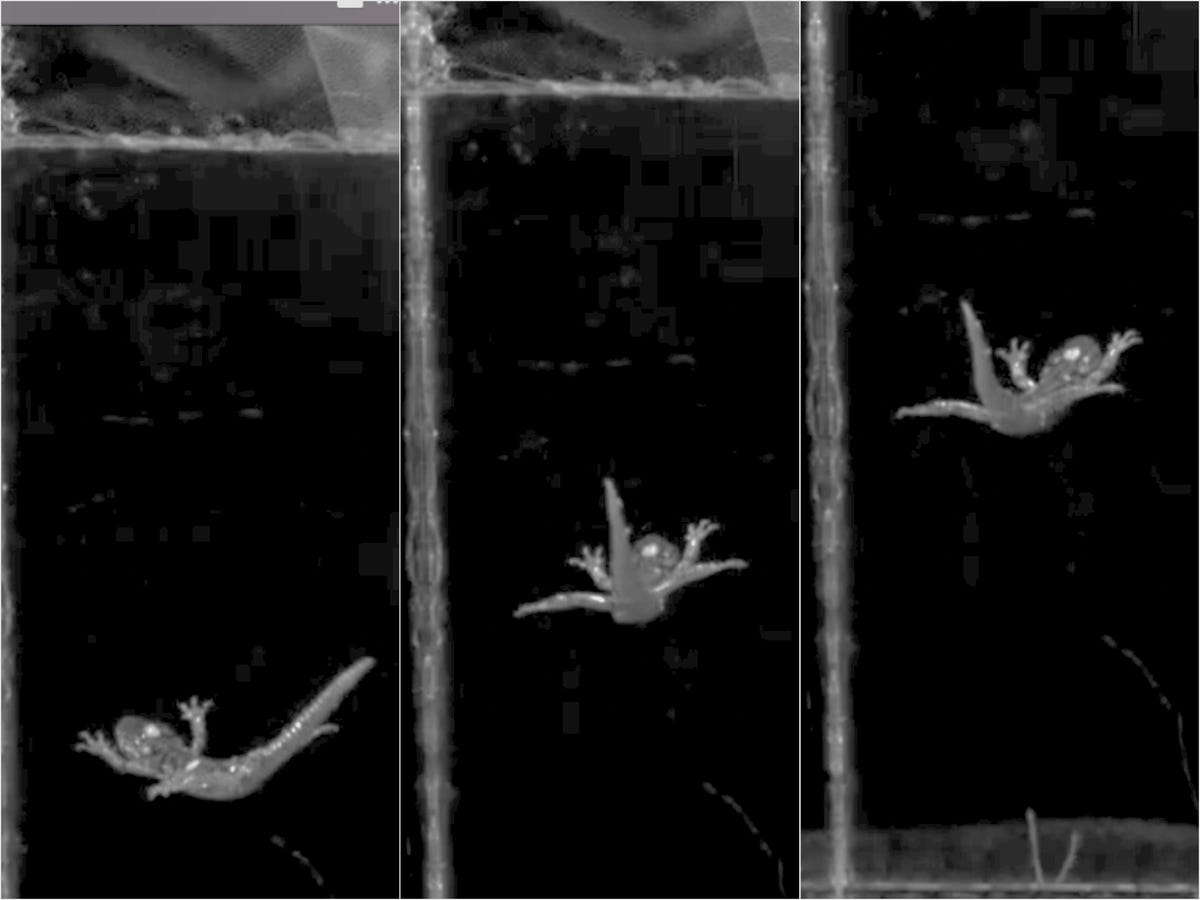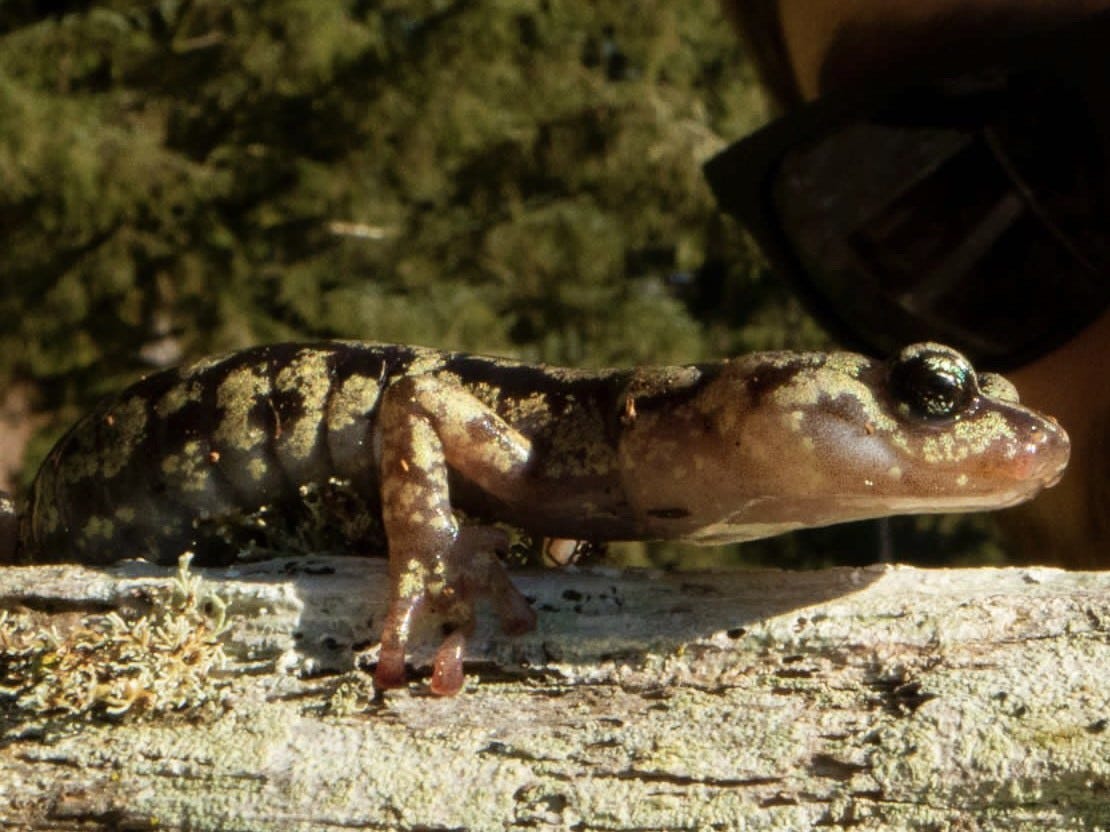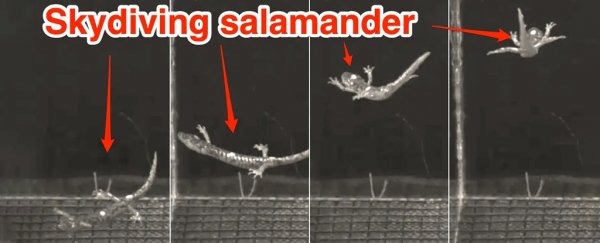Aneides vagrans, also called the wandering salamander, is an elusive critter. Its natural habitat is the canopy of California's redwood trees, the world's tallest trees, making it tough to observe.
One thing we do know about this salamander is that when disturbed it will willingly jump from tree branches, assuming a posture similar to that taken by skydivers, as can be seen below.
"It was confusing to see these salamanders jump so readily given the height of the trees they inhabit," said Christian Brown, a PhD Candidate of the University of South Florida and an author of the study.

These salamanders are particularly well adapted to living in the redwood canopy, Brown told Insider in an interview.
They have prehensile tails, long limbs, and flattened bodies that are perfect for climbing.
But their long narrow bodies do not look particularly aerodynamic. Unlike their distant cousins, the gliding leaf frog and the flying gecko, they do not have skin flaps or webbing which might help them glide.
So Brown and other scientists at the University of South Florida and the University of California, Berkeley, set out to understand what the salamander might be able to do.
Instead of dropping the salamanders from very high up, the scientists put them in custom-made wind tunnels designed to simulate a fall from the tree. The results of their study were published in the peer-reviewed journal Current Biology on Monday.
The scientists found that the salamanders had a "repertoire of postures and movements they use to control their drop", Brown said.
 Video stills showing how A. vagrans assumes a skydiving-ike position. (Christian)
Video stills showing how A. vagrans assumes a skydiving-ike position. (Christian)
By twisting their tails and changing the position of their toes and legs, the salamanders were able to keep their bodies almost parallel to the ground while they were falling.
They could also "execute banking turns and glide horizontally", Brown said.
By adopting this skydiving-like posture, the salamander reduced its vertical speed by up to 10 percent, the study found.
Brown told Insider he is now studying whether these salamanders can direct their flight to avoid falling straight down to the ground.
If they can, he thinks it's more likely that they choose to come back towards the trunk to grasp the lower limbs of the tree or the dense fern mats growing on the bark.
If they did fall down to the ground, that would likely not kill them, Brown said. These salamanders are relatively light and tend not to weigh more than six grams. So their fall could be cushioned by the soft redwood duff around the base of the tree, he said.
 A. vagrans, aka the wandering salamander. (Christian Brown)
A. vagrans, aka the wandering salamander. (Christian Brown)
However, the hike back up the redwood might prove fatal. A 2021 study found that it could take them hours or days to climb back up to the canopy.
"In that time, they could dry out, be preyed upon, or simply run out of energy before finding food again," said Brown.
Brown said other animals could have unexpected parachuting and gliding abilities that people have yet to notice.
He's hoping the study will draw attention to the complex but poorly understood biodiversity of the redwood canopy.
"Scientists have barely scratched the surface in studying the redwood canopy ecosystem and the unique fauna it has shaped through evolutionary time," he said per the press release.
This article was originally published by Business Insider.
More from Business Insider:
